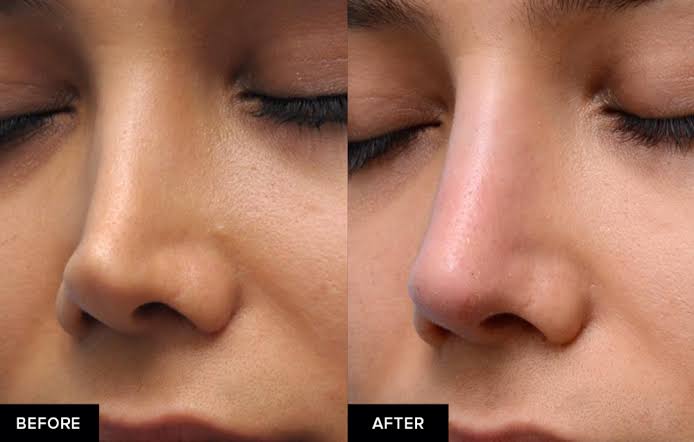
There is no doubt that the idea of rhinoplasty without surgery may seem very tempting! But, what is the truth behind it? Can everyone submit to it?
You must have heard about a non-surgical rhinoplasty, also known as a “nose filler” or a “15-minute procedure,” where the area is filled to change the shape of the nose for up to 6 months. But, can it be adopted to beautify every nose?
Cases in which it is recommended to resort to nasal fillers
In fact, there are 3 cases in which it is recommended to undergo non-surgical rhinoplasty, namely:
Reducing the appearance of small bumps in the nose: If the goal is to reduce the appearance of small bumps in the bridge of the nose to give it a straight shape, then the nose filler is one of the safe means for this purpose. To top. Correction of nasal bridge prolapse: Dermal fillers are also ideal options for correcting the problem of nasal prolapse that often results from either an accident or more than one cosmetic surgery in the nose.
As for the cases in which nasal filler injections are not useful, they are:
Beautification of large bumps or a broken nose.Treatment of breathing problems caused by nasal congestion, adenoids or internal sprains.How long do the results of nasal fillers last?
When it comes to nasal filler injections, it is important to know that the results are temporary and often range between 6 months and 3 years, depending on the materials that are used in the dermal fillers.
What to expect after non-surgical rhinoplasty
After the filler injection procedure, you may experience symptoms such as pain, swelling and redness at the injection site. However, after an hour or two, you will feel better and you will notice that the redness has started to ease so that you can see the results more clearly. Results are often visible and definitive after a week or two of undergoing the injection.
What are the complications?
It is true that it is one of the safest ways to beautify the nose and modify its appearance, but if it is not done by the right doctor, it may cause serious and serious complications, including:
Infections in the blood vessels, defects in the skin of the nose, damage to nasal tissues, loss of vision







